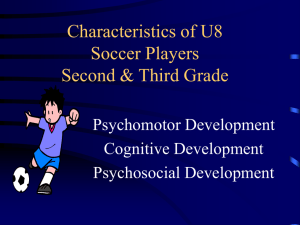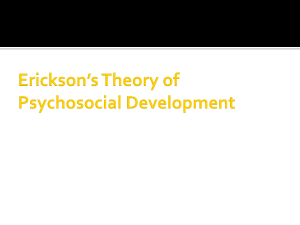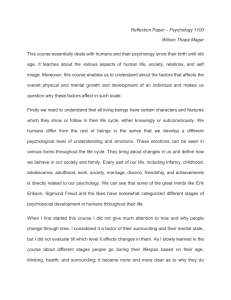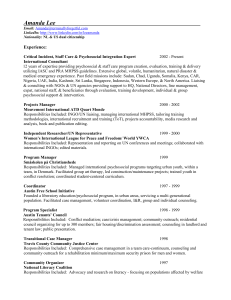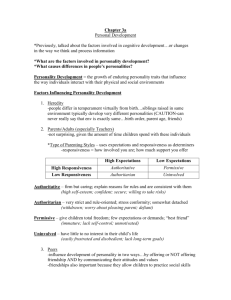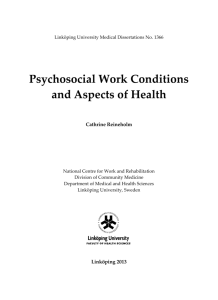Instructions for Psychosocial Assessment
advertisement
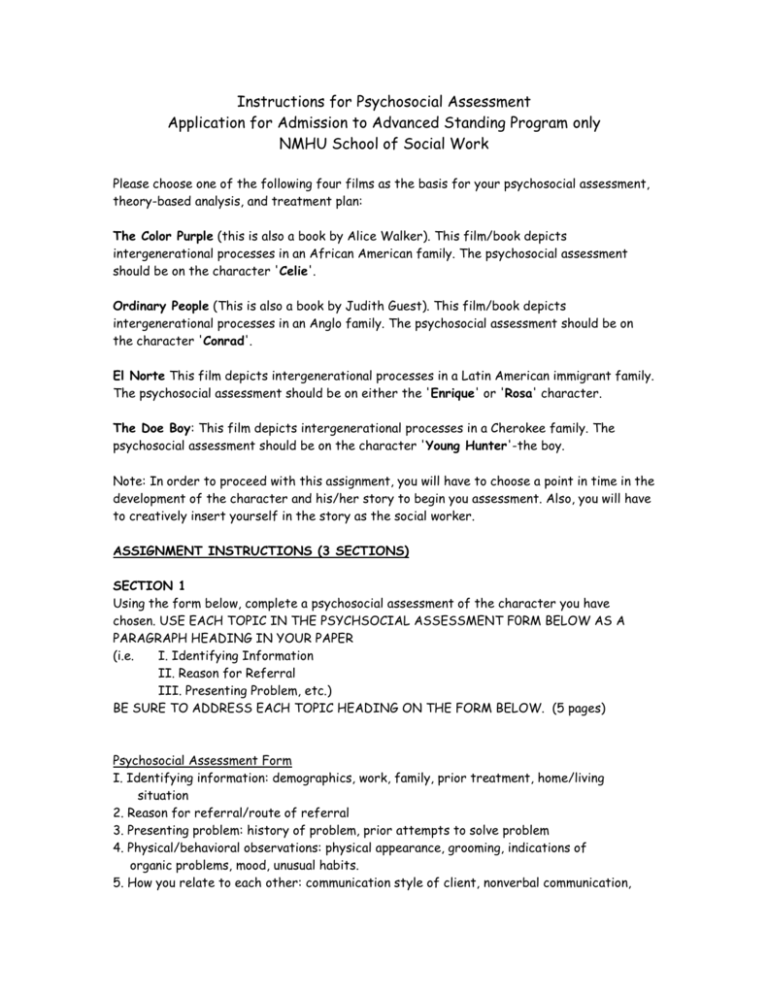
Instructions for Psychosocial Assessment Application for Admission to Advanced Standing Program only NMHU School of Social Work Please choose one of the following four films as the basis for your psychosocial assessment, theory-based analysis, and treatment plan: The Color Purple (this is also a book by Alice Walker). This film/book depicts intergenerational processes in an African American family. The psychosocial assessment should be on the character 'Celie'. Ordinary People (This is also a book by Judith Guest). This film/book depicts intergenerational processes in an Anglo family. The psychosocial assessment should be on the character 'Conrad'. El Norte This film depicts intergenerational processes in a Latin American immigrant family. The psychosocial assessment should be on either the 'Enrique' or 'Rosa' character. The Doe Boy: This film depicts intergenerational processes in a Cherokee family. The psychosocial assessment should be on the character 'Young Hunter'-the boy. Note: In order to proceed with this assignment, you will have to choose a point in time in the development of the character and his/her story to begin you assessment. Also, you will have to creatively insert yourself in the story as the social worker. ASSIGNMENT INSTRUCTIONS (3 SECTIONS) SECTION 1 Using the form below, complete a psychosocial assessment of the character you have chosen. USE EACH TOPIC IN THE PSYCHSOCIAL ASSESSMENT F0RM BELOW AS A PARAGRAPH HEADING IN YOUR PAPER (i.e. I. Identifying Information II. Reason for Referral III. Presenting Problem, etc.) BE SURE TO ADDRESS EACH TOPIC HEADING ON THE FORM BELOW. (5 pages) Psychosocial Assessment Form I. Identifying information: demographics, work, family, prior treatment, home/living situation 2. Reason for referral/route of referral 3. Presenting problem: history of problem, prior attempts to solve problem 4. Physical/behavioral observations: physical appearance, grooming, indications of organic problems, mood, unusual habits. 5. How you relate to each other: communication style of client, nonverbal communication, emotional state of the client, your feelings about client, including empathic connection or lack, feelings evoked transference/countertransference issues 6. Developmental history: childhood, adolescence, adulthood, education, relationships, parenthood or not; divorces/separations; losses. 7. Current ego psychological prol1le: significant relationship; (family situation; general mood; ego functioning including defensive functioning, anxiety, impulses, superego, object relations). 8. History of trauma: abuse, violence, substance abuse, traumatic losses, etc. 9. Factors of diversity: culture, race, ethnicity, gender, age, class, sexual orientation, religion/spirituality; differential physical or mental abilities. Intergenerational factors. . 10. Psychosocial effects of oppression: "violations of clients space, time, energy, mobility, bonding, or identity due to membership in a marginalized population group; alienation from self or others due to institutionalized oppression, stage of identity formation as member of a group; strengths, resources, and sources of personal power in responding to oppression; primary patterns of coping with membership in a marginalized group" (Van Voorhis,. 1998, p. 124). 11. Grief issues 12. Attitudes toward parenting nurturing and development. Joys and problems 13. Social networks: family and friends, coworkers, etc.; short-term or long; supportive, draining, conf1ictual 14. Home environment: conditions, hazards, supports; source of stimulation, peace, conflict, etc. 15. Other relevant information Genetic/dynamic speculation below: Weave together biological, psychological, social aspects of client's past and present into speculation about dynamics, the interaction off actors contributing to client's current difficulties. Goal is to move beyond "what" of person's self and situation into “how" and “why". The goal of this aspect of the assessment is to bring all salient aspects of person's story into a critical speculation about his/her current situation in order to set parameters for the treatment plan. l. To what extent does problem involve stress due to current developmental tasks (adolescence, parenting, etc.) or current situational stress or trauma? 2. To what extent docs problem involve impairments in ego functioning and/or developmental deficits or difficulties. 3. To what extent is problem result of lack of fit between needs and environmental resources? 4. What internal and environmental strengths does client have that can be used to work toward improvement in the situation and/or functioning? (Goldstein, 1995). Van Voorhis, R M. (1998). Culturally relevant practice: A framework for teaching the psychosocial dynamics of oppression. Journal of Social Work Education, 34,1, 121-133. SECTION 2 Next, choose a theoretical approach from the three options below to analyze the data in your psychosocial assessment. a. Empowerment/strengths perspective b. Ego psychology c. Feminist perspective Choose one of these perspectives to present a theory-based, person-in-environment formulation of the dynamics of the client's (i.e. character's) current situation. In this section, you pull together the descriptive data on the client's life and situation that you presented in your psychosocial assessment into a critical and theory-based analysis of the dynamics of the client's problems and strengths. The client data from SECTION 1 above should be related as fully as possible to the theoretical approach that you have chosen. (2 pages) SECTION 3 In this treatment plan section of your assessment identify challenges and problems to be addressed and present goals and interventions (helping efforts) that are consistent with the theoretical approach that you have chosen above. Formulate four goals with their associated tasks for client and worker (the goals can be short-term, long-term or both). The goals should be consistent with the theoretical approach that you have chosen above. (2 pages)
